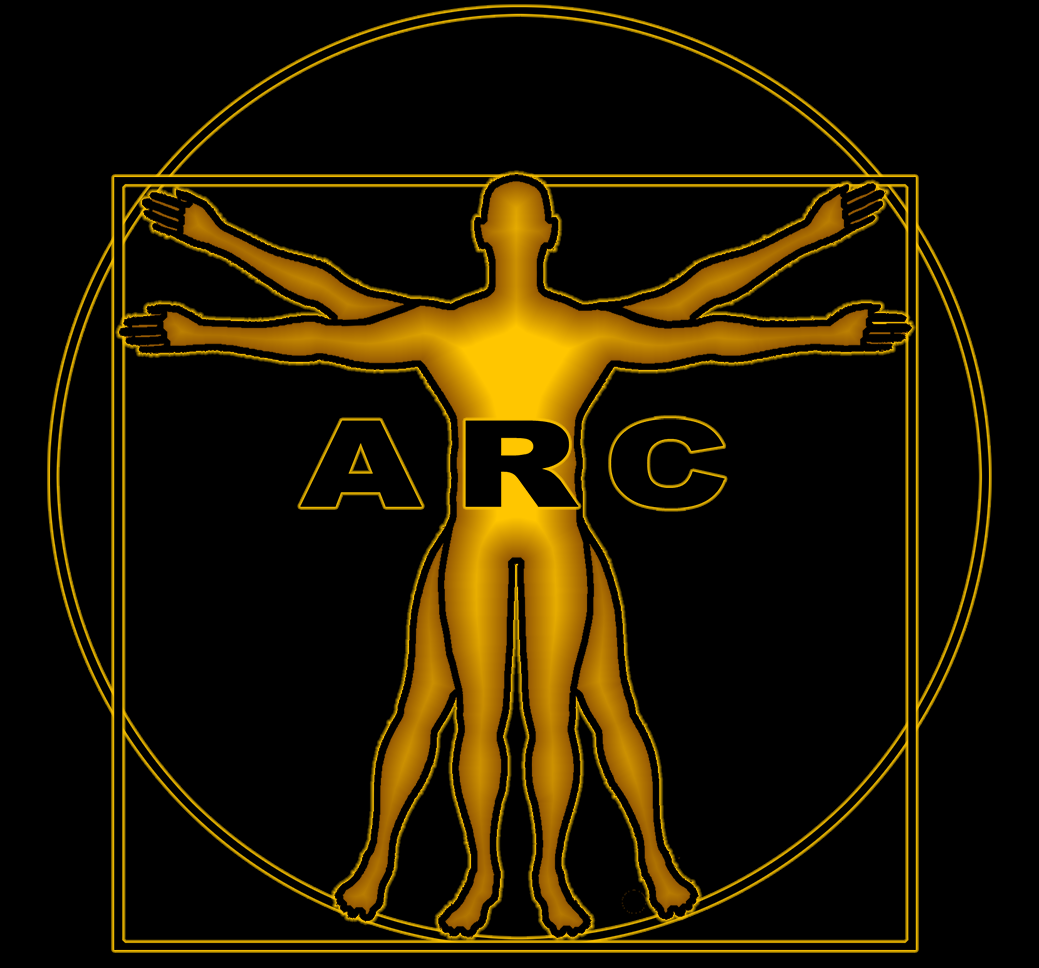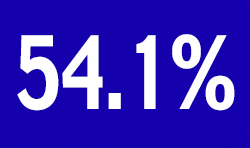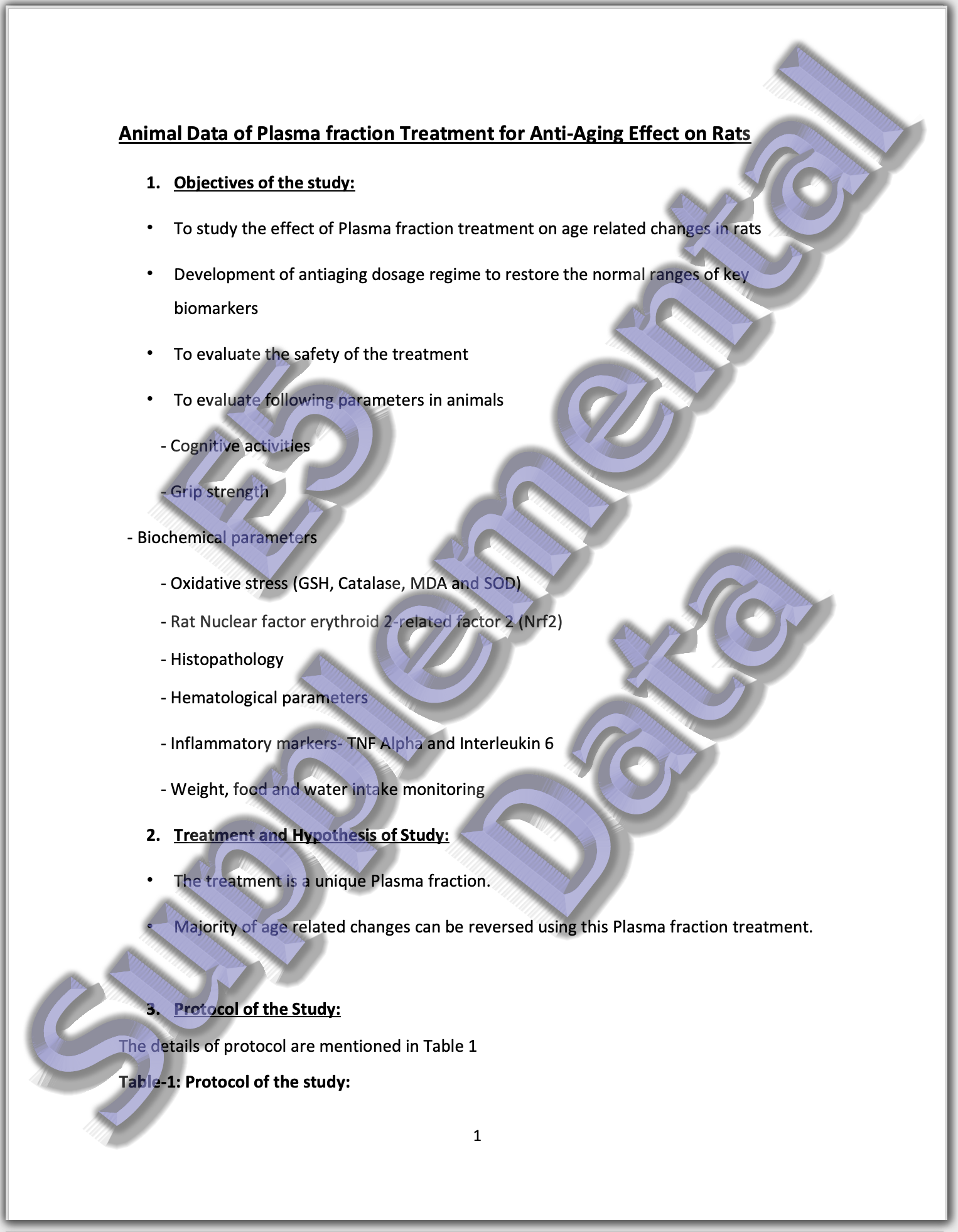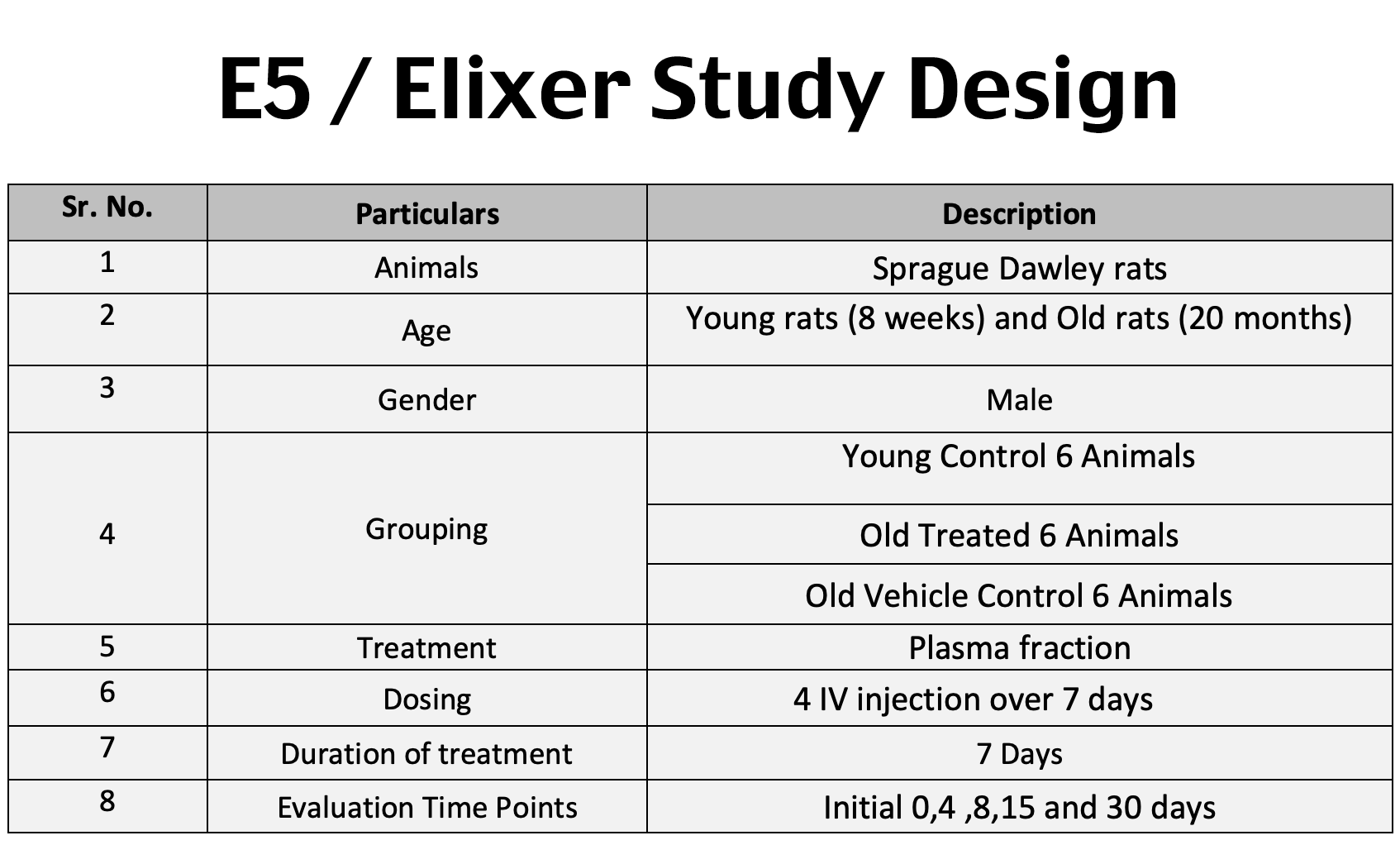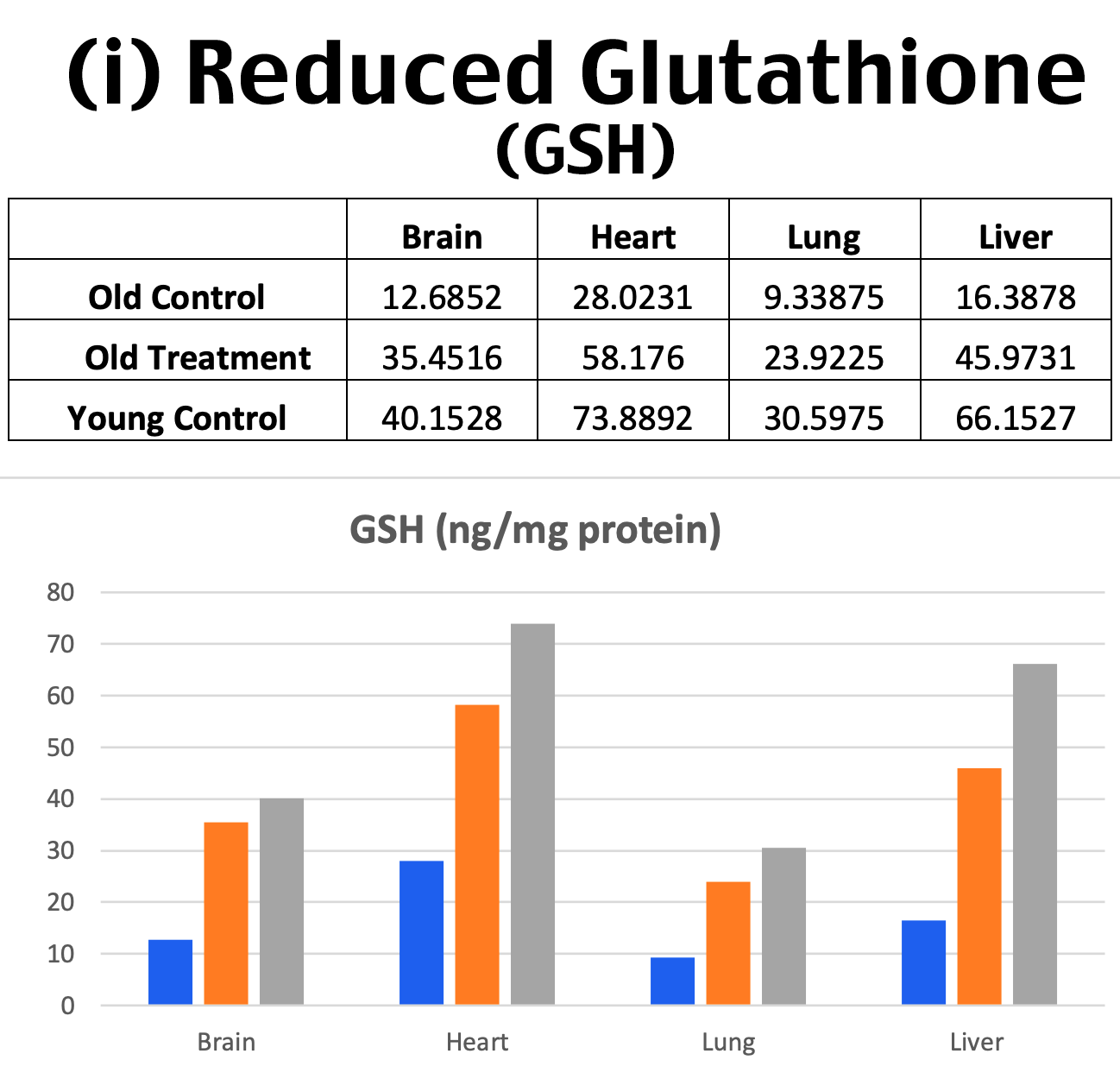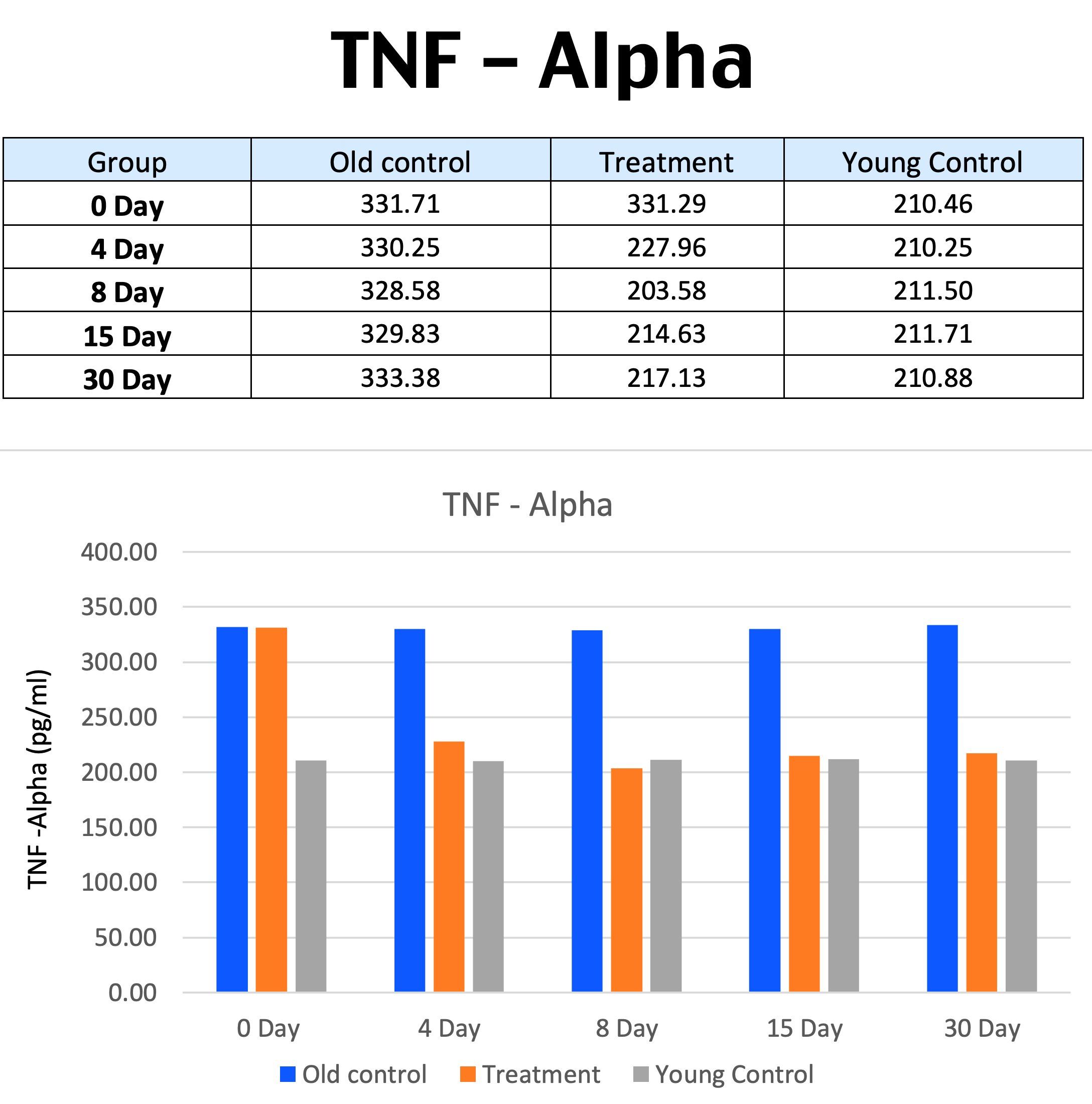
E5 formerly ELIXER

(Last Revision: 7/15/2022)

E5: CUTTING EDGE THERAPEUTIC IN AGE-REGRESSION

E5 has the Potential to Redirect the Entire Field of Medicine
Dr. Harold L. Katcher has described E5 as multiple plasma fractions that interact with targets implicated in directing the aging protocol. The term chronokines has been coined to identify these, age associated, signaling-molecules.
Chronokines have the ability to drive/direct biological aging pathways like homeostasis, tissue repair, neural functioning and stem cell regeneration. They are also responsible for activation of detrimental pathways that cause tissue damage, inflammation, and neurodegeneration. Collectively you can see that all of the elements of aging, as well as the pathways controlling non-communicable diseases, are subject to the command and the control of chronokines. Being able to hack the universal common and control process enables E5 to not just regress your biological age, but in what may be much more important for society, governments, HMO’s, insurance companies, physicians and you, to prevent diseases associated with aging or non-communicable diseases. Infectious disease will also be ameliorated because the host the infectious agent has invaded will be functioning with as healthy an immune system as is possiable. It’s as simple as this, young individuals don’t get sick. This period of disease free time is referred to as your healthspan. The financial burden this will remove from society is incalculable at this time.
The genius behind Dr. Katcher’s E5 discovery stems from his deep insights into the multiple molecular pathways capable of effectively regressing aging. The proteome consists of more than ten thousand proteins circulating within the human blood/plasma circulatory system. These molecular messengers are often referred to as plasma fractions by Dr. Katcher. Obviously the sheer number of these fractions adds another exponential layer of difficulty in unraveling the gordian knot that constitutes and controls aging.
Epigenetics; a highly-accurate molecular biomarker of aging utilizes the methylation of DNA, CPG motifs to determine biological age. Epigenetics or the methylation of DNA is emerging as the master, universal control system of aging. [6] You can think of it this way: DNA is the computer, methylation is the program running on the computer and the signals that get generated are Chornokines. Where this becomes complicated is the chronokines and the methylation marks communicate back and forth in feedback loops.
It is very significant that E5 regulates genes associated with transcription factors also associated with aging and this has been documented utilizing Steve Horvath epigenetic aging clocks. The average reduction in Epigenetic age by E5 in rats as evidenced by one of Dr. Horvth’s clocks was 54.1%. [5] To put this into perspective, I am 72 years old. The same regression utilizing my chronological age would put me back to 40 years old.
Dr. Katcher has been involved in studying, researching and publishing peer reviewed research in the aging field, since the early 80’s. Far longer than many of the prominent scientist and marque names that anyone interested in aging has become familiar with over the last few years. During this period of time, age regression has emerged from contradicting the rules of nature, to acceptance as a scientific reality. Dr. Katcher’s prior research has extended to several fields and he was one of the first scientist to demonstrate the connection between the BRCA1 gene and the increased risk for breast and ovarian cancer. [1] The News / Developments section below provides a historical chronology of the publications and events leading to the development of E5.
Because of Dr. Katcher’s deep insights into the causes of aging, he was able to first test his theory by just utilizing nutritional supplements as a quick and inexpensive and probe. This blunt tool enabled him to determine if the ten targets he had identified would respond by improving the health of the test animals.
“Our first pass was to try a combination of known herbal supplements that are known to bind with the targets we’d identified. We gave them to rats, and at first nothing seemed to be happening. But after two months (about 4 years in human terms) the rats showed signs of rejuvenation. We were encouraged. Rather than continue with the herbs, though, we formulated the elixir, now E5 that we report on here. This is our first iteration, with dosage and timing determined theoretically, yet to be optimized in the lab.”
Because these are described as plasma fractions, an obvious problem for commercialization arises. Blood products are considered biologics in the regulatory realm of drug development. Reproducing biologically active mimetics in a reproducible and sterile environment is expensive and the most regulated area of drug development by the FDA.
Dr. Katcher solution was to developed a raw material supply that goes beyond the need to obtain blood from young people. Dr. Katcher and Akshay believe they have identified bio-similar factors present in the blood of all mammals. Just as importantly, they are developing a supply, purification and manufacturing process that insures their production will be scaleable from microliters to metric tonnes. This will insure a virtually limitless supply of E5 as soon as regulatory approval is granted.
Because these are all natural proteins already found in the blood, they work by natural means and the regulatory systems they control are themselves controlled by multiple feedback loops that increase the level of safety of this intervention. The strongest evidence of this is the increase in both measures of health and lifespan in the treated animals in the studies conducted to date.
Two recent developments have provided new insights into the efficacy demonstrated thus far in rats. The results of a second study and much more information about how the treatment modality is produced is disclosed in a recent patent application granted July 14, 2022 for E5. These two developments are described below. We are going to focus first on what the patent discloses regarding E5. This description is taken from the patent which describes in detail the stratification process to produce E5, but does not specifically identify individual molecular targets. From the patent:
1. WO2022150818 - ANTI-AGING COMPOSITIONS AND USES THEREOF
◉ The present applicants (Harold L Katcher and Akshay Sanghavi) have discovered methods and compositions comprising a concentrated, purified plasma fraction.
◉ The plasma fraction may provide an effective treatment for aging and age-related diseases, without causing an immune reaction in the intended recipient.
◉ For example, the present composition may be able to reset gene expression, the epigenome, the transcriptome and/or proteome in the recipient to more closely resemble that of a younger individual, thus resulting in a reduction of any of a number of anti-aging phenotypes.
◉ [0008] The donor of the plasma may be a member of a different species (e.g., livestock) than the recipient (e.g., human), thus crucially circumventing the need for human donor plasma. [0048] This is especially useful as they circumvent the need for human donor plasma which may be of limited use based upon availability and ethical concerns.
◎ It should be noted that that the first rat study was conducted utilizing a purified plasma fraction derived from pigs blood. The rats did not experience any reaction, allergic or otherwise from this xenographic infusion.
◎ [0010] The composition comprising plasma and platelets is obtained from a mammal. In some embodiments, the mammal is a pig, a cow, a goat, a sheep, or a human. In some embodiments, the mammal is selected such that its plasma will not cause an immune reaction with an intended recipient. In some embodiments, the mammal is a healthy ([0024] from a young animal) juvenile or adolescent mammal, hi some embodiments, the intended recipient is a human.
◎ [0064] Section 64 of the patent details the parameters of “young,” in the context of donor animals. The repeated mention of Yorkshire pigs, of about 5-6 months of age hints at the utilization of this mammal as the primary donor animal being considered.
◎ Section 66 provides for the inclusion of young humans as donor animals. Because it is mentioned, it raises the possibility that there may be an immunological advantage to donors being familial relations. [0066] In some embodiments, the donor and recipient organisms are humans that are related, such as by parent-child; grandchild-grandparent, etc.
◉ Also provided herein are novel methods of preparing such compositions that comprise incubating a crude plasma fraction with PEG, sedimenting the fraction, and applying the resuspended sediment to a size exclusion chromatography column.
◎ The patent describes in detail the process utilized to produce E5. These steps include:
a) isolating a crude plasma fraction from a composition comprising plasma and platelets;
b) incubating a solution comprising the crude plasma fraction of step a) with polyethylene glycol (PEG);
c) centrifuging the plasma fraction and polyethylene glycol solution of step b) to generate a sediment;
d) resuspending the sediment in a buffer and applying the resuspended sediment to a size exclusion chromatography matrix;
e) eluting fractions from the size exclusion chromatography matrix; and
A variety of size exclusion processes are incorporated to isolate the chronokines of interest.
f) concentrating the eluted fractions to provide the concentrated, purified plasma fraction.
As noted in the fellowing patent paragraph, twelve target fractions are collected: [0102] After collecting eluate fractions (e g., 12 fractions) comprising the purified plasma fraction, obtained from a composition comprising plasma and platelets obtained from the collected blood of a young or adolescent animal, the eluate fractions comprising purified plasma fraction may be clubbed and concentrated.
These fractions are collected utilizing a dialysis membrane. The molecular weight of the 12 fractions range between 10 kD and 15 kD. [0103] The dialysis membrane has a molecular weight cut-off of between about 12 kD and about 14 kD, about 11 kD and about 13 kD, or about 10 kD and about 15 kD (e g., Dialysis membrane-150, LA401).
◎ The final step in this process is the resuspension, and optionally the lypholiziation of the purified plasma fraction.
[0016-17] The method further comprises resuspending the concentrated, purified plasma fraction in saline to produce a pharmaceutical composition. In some embodiments, the method further comprises lyophilizing the pharmaceutical composition.
◉ Some important points disclosed in the patent;
◎ The total volume of the donor plasma should be equal to the total volume of the recipient mammal.
[0027] In some embodiments, a concentrated, purified plasma fraction is concentrated from an initial volume of plasma from a young animal that is at least equal to the total plasma volume of the individual to whom the concentrated, purified plasma fraction is administered.
◎ The plasma fraction will potentially be [0027] administered intravenously, transdermally, nasally, or transmucusoly.
◎ [0048] The present composition is able to reset gene expression, the epigenome, the transcriptome and/or proteome in the recipient to more closely resemble that of a younger individual, thus resulting in a reduction of any of a number of anti-aging phenotypes.
◎ Xenographic transplantation of any biological materials can be toxic, generating strong immunogenic reactions in the recipient. The patent details both the lack of this detrimental response and the precautions in the preparation of E5 to circumvent it. This is primarly accomplished by removing all cells, such as leukocytes and platelets. Lymphocytes express LFA antigens which would flag the cells as foreign to the recipient.
[0049] In some embodiments, the concentrated, purified plasma fraction does not induce an immune response in the recipient. The present method may effectively remove cells (such as platelets) from the donor blood and plasma which display HLA proteins that would otherwise be detected by the recipient immune system.
◎ [0067] In some embodiments, the recipient is of any age and a composition comprising a concentrated, purified plasma fraction is administered prophylactically to prevent an age-related disorder. The composition is administered to an individual at risk of developing an age-related disorder, such as an individual with a family history of developing an age-related disorder.
◉ Some important points not disclosed in the patent;
◎ No specific biological targets are identified that are associated with specific pathways known to control aging.
◎ Although no specific targets are identified, a list of “compositions," targets and pathways are identified.
[0108] In some embodiments, provided herein are composition comprising a purified plasma fraction. In some embodiments the composition comprises one or more exosome biomarkers. In some embodiments, the composition comprise CD63, CD81, and/or CD9. In some embodiments, the composition comprise one or more of Alix, TSG101, flotillin 1, HSP70, and CD9. some embodiments, the composition comprises one or more components set forth in Table 1.
◎ Table 1 (page 26 of the patent) provides an complete listing of what are referred to as “Exemplary proteins.” Also included are “Exemplary lipid and lipid related enzymes.” This provides a list of potential inclusion list of target in the E5 therapy.
◉ The charts and figures utilized to support the biological activity and age regression benefits are primarly derived from the results of the rat study that was published in 2019. Those results and figures are provided in the next section.
It appears from the information provided by the patent that Harold’s insights were to see that the parabiosis and young blood experiments could be reformulated by harvesting blood / plasma and extracting the biologically active chronokines from them and re-infusing only a targeted fractional portion of the chemical messengers. This results in the same benefit as utilizing whole blood, but removes many of the risk. Utilizing blood products from other mammals in humans is a novel concept that alleviates many of the supply constraints that would have been inherent in obtaining young blood from adolescent humans. It will in all probability be an additional hurdle to overcome in the regulatory process.
Another patent by a competitor in the same field was filled by ALKAHEST, INC, a division of Grifols, in 2018. That patent’s title provided a hint of the potentials convergence of the research focus.
“1. WO2018034712 - BLOOD PLASMA FRACTIONS AS A TREATMENT FOR AGING-ASSOCIATED COGNITIVE DISORDERS”
13. Indications
The list of indications is broader then a strictly neurological perspective. Epigenic regression will obviously have braoder effects than the limited scope the title of the patent would sugest. To broach that envelope they identify “frailty” as an intended indication. If you review that paragraph is becomes obvious that frailty = aging.
N. Frailty. Frailty Syndrome (“Frailty”) is a geriatric syndrome characterized by functional and physical decline including decreased mobility, muscle weakness, physical slowness, poor endurance, low physical activity, malnourishment, and involuntary weight loss. Such decline is often accompanied and a consequence of diseases such as cognitive dysfunction and cancer. However, Frailty can occur even without disease. Individuals suffering from Frailty have an increased risk of negative prognosis from fractures, accidental falls, disability, comorbidity, and premature mortality. (C. Buigues, et al. Effect of a Prebiotic Formulation on Frailty Syndrome: A Randomized, Double-Blind Clinical Trial, Int. J. Mol. Sci. 2016, 17, 932). Additionally, individuals suffering from Frailty have an increased incidence of higher health care expenditure. (Id.)
The publication of the study detailed below is: Reversing age: dual species measurement of epigenetic age with a single clock. The paper was done in collaboration with Dr. Steven Horvath, Department of Human Genetics, David Geffen School of Medicine, University of California. The paper marks a demarcation in medicine.
Animal Data of Plasma fraction Treatment for Anti-Aging Effect on Rats
The study results provided below are excerpts taken form a supplement to the paper provided by Dr. Katcher. You can download the entire supplement by clicking on the document image here >>
Elixer, now E5, Study Design
◉ Evaluation Parameters:
1. Body Weight
2. Barnes Maze Learning Ability
3. Grip Strength
4. Hematological Parameters
5. Biochemical Parameters
6. Oxidative stress biomarkers
(i) Reduced glutathione (GSH)
(ii) Catalase activity
(iii) Superoxide dismutase (SOD) activity
(iv) Lipid peroxidation (LPO) (malondialdehyde (MDA)
7. Rat Nuclear factor erythroid 2-related factor 2 (Nrf2)
8. Anti-inflammatory Markers
(i) Interleukin 6
(IL-6)(ii) Tumor Necrosis Factor (TNF)
9. Histopathology of Vital Organs
◉ Body Weight:
Body weight of the old animals and young animals was increased over a period of 30 days. There was no change observed in the food intake however an increase in water intake was evident in old treated animals group.
◉ Learning Ability:
A Barnes maze apparatus used to determine the learning ability of the animals upon treatment. The data represented at right, shows % decrease in time spent on maze by rats. The data of day 1 and day 7 was compared to determine the learning ability. The data shows decrease in the learning ability in the animals of old control group however it is increased in the group of old treated animals. The data of treated old and young group is comparable.
◉ Muscle Strength:
A Grip strength meter was used to determine the muscle strength of animals. The data is represented in the figure at right. The data shows significant increase in muscle strength in the treated old group compared to old control group treatment. The data of treated old group is comparable to young animal’s group.
Click ]√] to Enlarge
◉ Results: Biochemical Parameters:
Biochemical Parameters: Data represented in Table 7 shows changes in the biochemical parameters of various organs. The liver function tests and kidney function tests are found to be better in the treated old group compared to old vehicle control group after 8 days of treatment. The results shown in blue demonstrates significant difference between old control and old treated groups however no significant difference between young control and old treated.
◉ Alterations in oxidative stress biomarkers
◉ Anti-inflammatory Markers:
1. Interleukin-6:
The data represented at right shows remarkable decrease in IL-6 concentration in the treated old group compared to old control group. The data of treated old group is comparable to young animal’s group.
Interleukin 6 is a key marker indicating the systemic level of inflammatory processes the organism is experiencing. Young individuals have lower levels of IL-6.
◉ Tumor Necrosis Factor (TNF) Alpha:
The data represented in at right shows significant decrease in TNF Alpha concentration in the treated old group compared to old control group after 30 days of treatment.
TNFalpha level provide a strong correlation to the level of inflammation in an individual, including the rats in this study.
◉ Study Conclusions:
◉ Plasma fraction treatment showed significant improvement in the old animals
◉ Plasma fraction treatment can reverse the age related changes
◉ It could be helpful in preventing the age related and lifestyle disorders
◉ This treatment is safe as no abnormality observed in animals
ARC’s conclusion: If there is anything about these results that you do not find remarkable, I would invite you to review the published literature and report back to us anything you find that comes even remotely close to these results.
A new study of E5 is currentely being conducted by Dr. Katcher to extend the informational window of safety, toxicity and efficacy in furtherance of a future FDA application. This new study will also provide a longevity comparison between treated and untreated animals.
Dr Gregory Fehy will also be conducting an E5 study in dogs. We will post an update here on that trial when more information becomes available.
A nonstop, online discussion has taken place since Dr. Katcher first published this paper, on various blogs and on twitter. The most insightful exchange of ideas and theories on E5 can be found on Josh Mitteldorf’s blog. The post can be found under the heading of “Age Reduction Breakthrough,” Although Josh’s blog post on Dr. Katcher’s article was published on May of 2020, a high level, scientific debate is still ongoing as comments and insights get posted by scientist from all over the world on an almost daily basis. Josh’s blog contains a wealth of other articles that are relevant and extremely educational to any individual with an interest in age regression.
Scientific Communities Reactions
You can begin to understand the importance of a scientific breakthrough based on the level of resistance you receive from other researchers in the same field. Blow back is not an uncommon response in this field. The more a new discovery or advancement challenges the status quo, the more resistance you can expect. Dr. Jonas Salk once shared with me his take on the progression or stages of acceptance by the scientific community. There initial response will be your wrong, period! As the data emerges that begins to support the concept they will migrate to a position of neutrality or we need more data. When it becomes apparent that the concept was correct and the data now completely validates this new scientific hypothesis, their position suddenly changes to something like; it was my idea before you published it, and I felt that way all along.
Dr Katcher has been subjected to disdain, secpticism and outright disbelief. He has been directly criticized for not disclosing every element of his research. That is changing.
One twitter antidote exemplifies the transition of a prominent aging researcher from incredulous sceptic, to lets wait and see what the data revels, eventually acknowledging the potential importance of this breakthrough in age regression.

A “That’s Astounding!,” Twitter Exchange
Prominent Aging Scientist(s) Did not Believe the Results of Dr. Katcher’s initial Study! He Was Not Alone.
Dr. David Sinclair, is an Australian biologist who is a professor of genetics and co-director of the Paul F. Glenn Center for Biology of Aging Research at Harvard Medical School. He is known for his research on aging with a focus on epigenetics. Dr Sinclair, like many other scientist was skeptical when he first read the paper. You can click on the twitter image at right to fellow his original thread and his transition from sceptic to anxiously awaiting the results of the ongoing and future trials.
Steve Horvath is a German–American aging researcher, geneticist, and biostatistician. He is a professor at the University of California, Los Angeles known for developing the Horvath aging clock, which is a highly accurate molecular biomarker of aging, and for developing weighted correlation network analysis.
Dr. Sinclair’s Twitter thread is excerpted below.
When contacted by Dr. Sinclair, even the first author, Prof. Steve Horvath indicated that the results were so literally incredible that didn't believe it at first. Dr. Sinclair suggested he check if the rats were mixed up, but he assured him, he had checked their genomes. The rats weren't mixed up and the data is the data. Dr. Sinclair’s take after the realization that the results were real; “This is Astounding!.”
Dr. David Sinclair’s Twitter Thread on E5 Study
Why would this be a big deal? Chemicals called methyls, which are added & subtracted from our DNA over time, control which genes remain on/off. This DNA methylation pattern can also serve as a biological clock with <5% error. If you smoke or overeat, your clock ticks faster …
The aging field is embracing the idea that changes to these methyl patterns and other gene regulators are a part of the aging process, and that it can be reversed. (Steve & Harold: thanks for citing Kane & Sinclair, 2019)...
Six years ago, a lifetime in the aging field, the mere suggestion that aging could be reversed was enough to have your colleagues & donors screw up their noses. Tom Rando @StanfordMed deserves a shout out for being brave enough back then to use the word "reversal" openly …
Even a few years ago, the best we could do was delay aging. For example, we could reverse the age of the microvasculature (cf. #COVID) and muscle within 4 weeks just by letting them drink some NMN. Similarly, young mouse blood rejuvenated the hearts and muscles of old mice….
Last year, a study of Greg Fahey and Steve Horvath @UCLA (discoverer of the methylation clock) made headlines by rejuvenating the thymus and reversing the blood clock about 1-2 years. This was a big deal in 2019….
Now to this new paper by Nugenics Inc. & Horvath: 18 rats were divided into three groups. 6 young rats (30 weeks old), 6 old rats (109 weeks old) & 6 old rats (also 109 weeks old) treated with plasma fractions from the young rats…
Plasma fraction treatment consists of two series of IV injections, four times on alternate days for 8 days. A 2nd series of injections were given 95 days later. In its entirety, the experiment lasted 155 days….
Blood was drawn at regular intervals for analyses to monitor the impact and cognitive functions were assessed 4 times. DNA methylation profiles of several organs were generated and age was calculated using six epigenetic clocks.
Using the final versions of their epigenetic clocks the reversal was: liver 75%, blood 66%, heart 57%, hypothalamus 19%. Average rejuvenation across four tissues was 54.2%. This is astounding…
What else did they see? Accumulation of fat in old tissues was greatly reduced. All health-related blood biomarkers they assessed (lipids, liver function, blood cells) "were altered towards the values of young rats, without exception."
Memory improvements anyone? By the third month, it was clear that treated rats remembered the test maze much better than the untreated ones…
The brain was an exception in terms of age-reversal, where the age reduction was significant using only some of the rat clocks (why is the brain so darn hard to fix? In this case, BBB barrier?)
Level of oxidative stress, and (wait for it) senescent cells were reduced "by a very considerable degree". Presumably, the immune system cleared the senescent cells. This is what the field is looking for…
The work shows, for the first time, that plasma fraction treatment reduces the epigenetic age of multiple tissues, and not by a little. What is in the plasma fraction that helps? Proteins, small chemicals, exosomes?
This reminds me of Fleming and Florey, who found an extract of penicillium mold could treat infections. There will be a race to find all these factors. http://www.alkahest.com is already on the case…
It will be interesting to see if reprogramming factors, such as OSK, are induced in the tissues of treated animals. This might explain the ability to reset age. Maybe it's a different set of genes for each organ. We will see....!

First Human Result: Topical Application
In April of 2022, Dr. Katcher rubbed some E5 on his right hand. He claims the skin was visibly thicker and lighter, and generally looks decades younger. He has posted a couple of photos of his hands. Click on the first entry in the Development Chronology below to learn more about up coming trials of E5 as a topical age-regression therapy for your skin.

N E W S / DEVELOPMENT CHRONOLOGY of E5
News, Publications and Important Events
Click + to expand title for details
-
A detailed examination of the patent is provided at the top of this page.
-
Yuvan plans to test the rejuvenation treatment on the hands of volunteers around the age of Dr. Katcher
Yuvan, a company focused on developing rejuvenation treatments, is planning to conduct human clinical trials in the coming months to test topical E5, a product that gained prominence when it was recently successfully applied by Dr. Harold Katcher — patient zero and inventor of the compound — in his own right hand.
In 2020, an experiment led by Dr. Katcher surprised the scientific community by epigenetically rejuvenating rats by 54%. To accomplish this, Dr. Katcher used E5, a specific plasma fraction discovered by him, applied intravenously. Topical E5 came about as a result of Yuvan's continuing research into the compound.
According to the CEO of the company, Akshay Sanghavi, Yuvan hopes to follow up with an E5 topical application human trial with volunteers around the age of Dr. Katcher in July or August of 2022. In the study, the topical E5 will be applied to the hands of the volunteers. Also according to Sanghavi, "if this also shows consistent results then we will set up a factory to manufacture E5 in the USA for topical use, and it seems like it may not require FDA approval for topical use as PRP is exempted under FDA’s 21 CFR 1271, but of course, our regulatory attorney will investigate thoroughly.”
Regarding Dr. Katcher's self-experiment with topical E5, at the moment some improvement can still be seen in his right hand (where, almost 2 months ago, he applied the topical E5 once), compared to the left hand, as is shown in the picture below. However, the clinical trials planned for the coming months need to confirm these results, as the applications would be many, such as saving the lives of victims of severe burns; besides that, reversing skin aging would in itself bring many benefits.
Lifespan study
At 40 months old, 3 treated rats are still alive, and all control rats have died. This study started in February of 2021 with 8 female rats in the treated group and 8 female rats in the control group, when all subjects were 24 months old. The study will continue until all rats are dead. The animals receive intravenous E5 every 90 days. At the end of the study, the statistical data will be prepared by the brilliant statistician Dr. Josh Mitteldorf.
The next study of E5 in rats has already started
A new study of intravenous E5 in rats began last week, with 24 Sprague Dawley rats which are 18 to 20 months old. 12 rats are in the treated group and 12 are in the control group. Of these, 6 are males and 6 are females in each group. The dosing cycle has been changed to 45 days.
NEEL peptide topical gel human trial
The NEEL peptide topical gel human trial has started.
-
I“We are happy to announce a research collaboration agreement with Johns Hopkins University, one of the most reputed Universities in the world of medicine”, stated Akshay Sanghavi, CEO of Yuvan. He added that “at JHU we hope to progress E5 from a crude biologic to a potent therapeutic with standardized doses. We have already mapped out our first year’s research work with their brilliant team and amazing lab equipment.”
New E5 study
To further understand the effects of E5, Yuvan is starting a new study that will be conducted in rats of both sexes and 18 months of age — the starting age of the male rats in the study published in May 2020 in bioRxiv. In this new study, it will be possible to clarify whether there are differences between the effectiveness of E5 in females and males.
Lifespan study
Regarding the lifespan study, the first death of a treated rat has occurred, so to date 3 untreated rats and 1 treated rat have died. Initially, there were 8 rats in each group.
NEEL gel
According to Sanghavi, “We are scheduled to go into production on the 14th of March due to raw material supply issues, so after batch testing and bottling, the orders should be shipped by the first week of April. We truly appreciate our customers' patience and will gift them a complimentary 30 ml bottle of NEEL gel for each bottle they purchased in return for their kindness and support."
-
Item description
-
Abstract
Young blood plasma is known to confer beneficial effects on various organs in mice. However, it was not known whether young plasma rejuvenates cells and tissues at the epigenetic level; whether it alters the epigenetic clock, which is a highly-accurate molecular biomarker of aging. To address this question, we developed and validated six different epigenetic clocks for rat tissues that are based on DNA methylation values derived from n=593 tissue samples. As indicated by their respective names, the rat pan-tissue clock can be applied to DNA methylation profiles from all rat tissues, while the rat brain-, liver-, and blood clocks apply to the corresponding tissue types. We also developed two epigenetic clocks that apply to both human and rat tissues by adding n=850 human tissue samples to the training data. We employed these six clocks to investigate the rejuvenation effects of a plasma fraction treatment in different rat tissues. The treatment more than halved the epigenetic ages of blood, heart, and liver tissue. A less pronounced, but statistically significant, rejuvenation effect could be observed in the hypothalamus. The treatment was accompanied by progressive improvement in the function of these organs as ascertained through numerous biochemical/physiological biomarkers and behavioral responses to assess cognitive functions. Cellular senescence, which is not associated with epigenetic aging, was also considerably reduced in vital organs. Overall, this study demonstrates that a plasma-derived treatment markedly reverses aging according to epigenetic clocks and benchmark biomarkers of aging.
-
US Patent that appears to be in the same developmental pathway as E5. The first references to this patent were Conboy, Conboy, and Katcher.
-
Abstract
I will first discuss how all aging models that assume that the aged cell has irreversibly lost its youthful capabilities through such mechanisms as accumulated dysfunction, accumulated damage, and/or accumulation of toxic byproducts of metabolism have been shown to be incorrect. I will then briefly discuss models of aging and propose an experiment that would distinguish between those models and provide a basis for organismic rejuvenation.
-
Abstract
The decline of tissue regenerative potential is a hallmark of ageing and may be due to age-related changes in tissue-specific stem cells. A decline in skeletal muscle stem cell (satellite cell) activity due to a loss of Notch signalling results in impaired regeneration of aged muscle. The decline in hepatic progenitor cell proliferation owing to the formation of a complex involving cEBP-alpha and the chromatin remodelling factor brahma (Brm) inhibits the regenerative capacity of aged liver. To examine the influence of systemic factors on aged progenitor cells from these tissues, we established parabiotic pairings (that is, a shared circulatory system) between young and old mice (heterochronic parabioses), exposing old mice to factors present in young serum. Notably, heterochronic parabiosis restored the activation of Notch signalling as well as the proliferation and regenerative capacity of aged satellite cells. The exposure of satellite cells from old mice to young serum enhanced the expression of the Notch ligand (Delta), increased Notch activation, and enhanced proliferation in vitro. Furthermore, heterochronic parabiosis increased aged hepatocyte proliferation and restored the cEBP-alpha complex to levels seen in young animals. These results suggest that the age-related decline of progenitor cell activity can be modulated by systemic factors that change with age.
-
Abstract
A strong candidate for the 17q-linked BRCA1 gene, which influences susceptibility to breast and ovarian cancer, has been identified by positional cloning methods. Probable predisposing mutations have been detected in five of eight kindreds presumed to segregate BRCA1 susceptibility alleles. The mutations include an 11-base pair deletion, a 1-base pair insertion, a stop codon, a missense substitution, and an inferred regulatory mutation. The BRCA1 gene is expressed in numerous tissues, including breast and ovary, and encodes a predicted protein of 1863 amino acids. This protein contains a zinc finger domain in its amino-terminal region, but is otherwise unrelated to previously described proteins. Identification of BRCA1 should facilitate early diagnosis of breast and ovarian cancer susceptibility in some individuals as well as a better understanding of breast cancer biology.
-
Abstract
An algorithm is presented which compares two restriction maps, yielding a measure of distance between the maps and relating the maps by an alignment. This new algorithm finds the minimum weighted sum of genetic events required to convert one map into the research-article, where the genetic events are the appearance/disappearance of restriction sites and changes in the number of bases between restriction sites. The algorithm is illustrated by comparison of the β-δ region of the globin gene cluster of four primate species. The results are in excellent agreement with known evolutionary relationships.
-
Item description

E5 has not been identified beyond a generic description of “plasma fractions.” There are approximately 10,000 distinct proteins and molecules within human plasma. The most prominent being albumin with constitutes 60% of the total volume of blood/plasma.


🔷 ? 🔷

🔷 ? 🔷

🔷 ? 🔷

🔷 ? 🔷


[1] [1994] A Strong Candidate for the Breast and Ovarian Cancer Susceptibility Gene BRCA1
[2] [2005] Rejuvenation of aged progenitor cells by exposure to a young systemic environment
[3] [2013] Studies that Shed New Light on Aging
[4] [2015] Towards an Evidence-based Model of Aging
[5] [2020] Reversing age: dual species measurement of epigenetic age with a single clock
[6] [2021] Universal DNA methylation age across mammalian tissues
[7] [2022] Circulating plasma factors involved in rejuvenation
[8] [2022] WO2022150818-Anti-Aging Compositions and Uses Thereof


